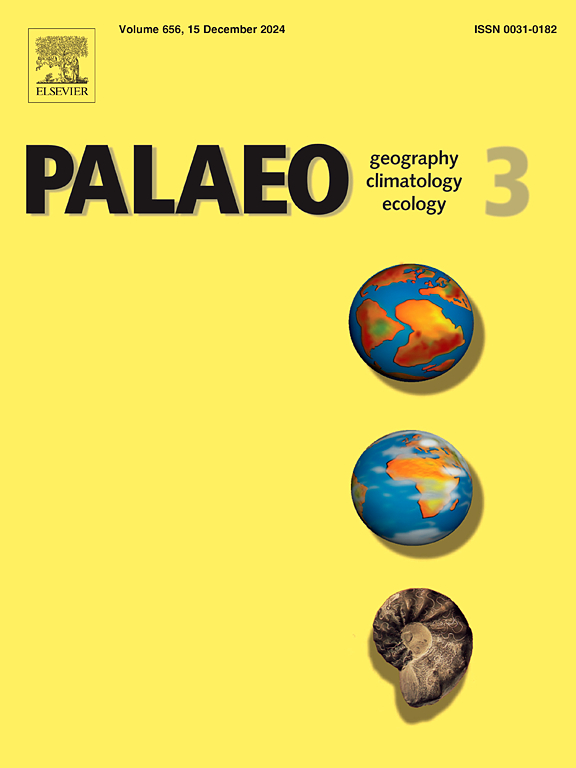Biomarker evidence on Early Paleolithic human-environment interactions from loess records in Tajikistan, Central Asia
IF 2.6
2区 地球科学
Q2 GEOGRAPHY, PHYSICAL
Palaeogeography, Palaeoclimatology, Palaeoecology
Pub Date : 2025-01-30
DOI:10.1016/j.palaeo.2025.112786
引用次数: 0
Abstract
The loess-paleosol sequences of Khovaling, southern Tajikistan preserve signatures of prehistoric human settlement during the Early Paleolithic. Archaeological finds excavated from Early Paleolithic sites located adjacent to the Obi-Mazar River indicate this part of Central Asia served as an early hominin migration corridor between Africa and destinations further east. The region has been reinvestigated by the “Timing and ecology of the Human Occupation of Central Asia” (THOCA) project since 2021, and > 2000 lithic artifacts have been recovered in pedocomplexes (PCs) 4, 5, and 6 with ages spanning ∼600–400 thousand years before present (ka). This is the first study to analyze novel biomarkers preserved in the loess-paleosol samples collected from on-site, near-site, and off-site contexts on the Khovaling Loess Plateau (KLP) to study early human occupation in Central Asia. Average chain length (ACL) of straight chain alkanes (n-alkanes) and wood/grass proxies reveal wetter climates with more trees during interglacial periods and drier climates with more grass vegetation during glacial periods. High abundances of total polycyclic aromatic hydrocarbons (PAHs) and high molecular weight PAHs (HMW PAHs) were also found during the interglacial periods of Marine Isotope Stages (MIS) 11, 13, and 15 suggesting landscape-scale fires occurred during ∼600–400 ka. Based on our results in conjunction with lithic artifacts excavated from Early Paleolithic sites in Khovaling, Tajikistan, we suggest early hominin occupation and existence of pyrotechnology among early groups of hominins in this territory.
求助全文
约1分钟内获得全文
求助全文
来源期刊
CiteScore
5.90
自引率
10.00%
发文量
398
审稿时长
3.8 months
期刊介绍:
Palaeogeography, Palaeoclimatology, Palaeoecology is an international medium for the publication of high quality and multidisciplinary, original studies and comprehensive reviews in the field of palaeo-environmental geology. The journal aims at bringing together data with global implications from research in the many different disciplines involved in palaeo-environmental investigations.
By cutting across the boundaries of established sciences, it provides an interdisciplinary forum where issues of general interest can be discussed.

 求助内容:
求助内容: 应助结果提醒方式:
应助结果提醒方式:


